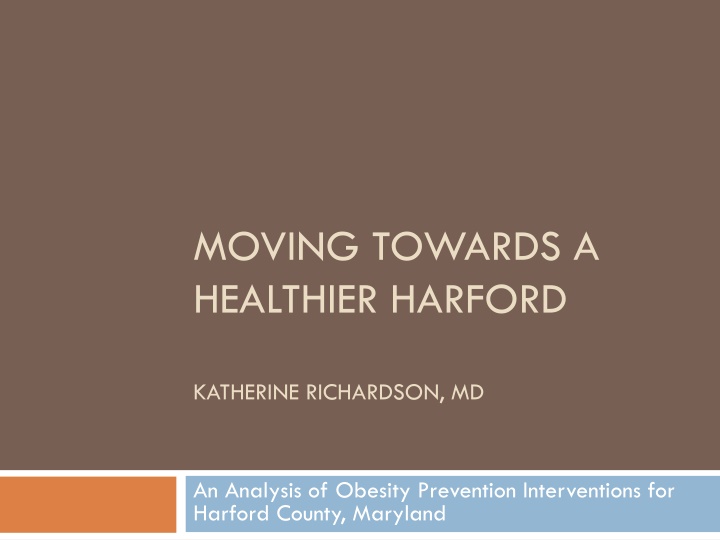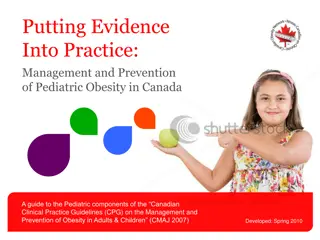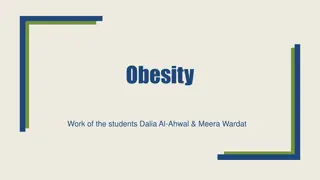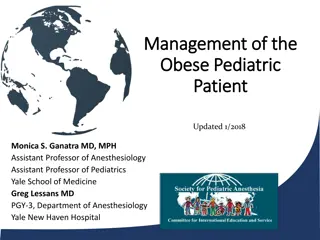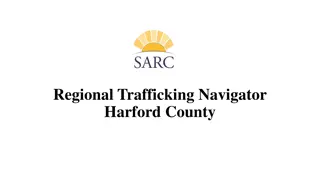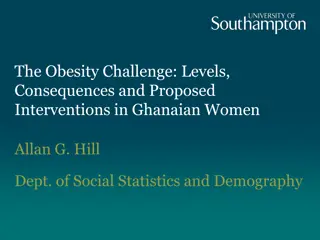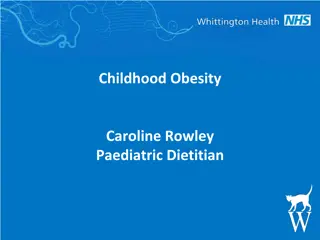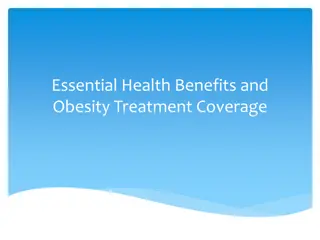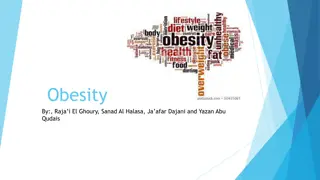Analysis of Obesity Prevention Interventions in Harford County, Maryland
This capstone project by Dr. Katherine Richardson explores obesity prevention interventions in Harford County, Maryland. Despite historical public health efforts, obesity rates continue to rise, necessitating a closer look at community-based interventions. By analyzing peer counties with similar demographics, the project aims to identify effective strategies to combat obesity in the region.
Download Presentation

Please find below an Image/Link to download the presentation.
The content on the website is provided AS IS for your information and personal use only. It may not be sold, licensed, or shared on other websites without obtaining consent from the author.If you encounter any issues during the download, it is possible that the publisher has removed the file from their server.
You are allowed to download the files provided on this website for personal or commercial use, subject to the condition that they are used lawfully. All files are the property of their respective owners.
The content on the website is provided AS IS for your information and personal use only. It may not be sold, licensed, or shared on other websites without obtaining consent from the author.
E N D
Presentation Transcript
MOVING TOWARDS A HEALTHIER HARFORD KATHERINE RICHARDSON, MD An Analysis of Obesity Prevention Interventions for Harford County, Maryland
Acknowledgements Capstone project for Master of Public Health, Johns Hopkins Bloomberg School of Public Health (JHSPH) Harford County Susan Kelly, Russ Moy, Kathy Kraft, and Bari Klein JHSPH Beth Resnick and Sara Bleich
My Background and Interests Family physician in Baltimore Interested in the role of the environment in an individual s lifestyle decisions around food and physical activity Believe states and counties are incubators for innovation in obesity prevention
Project Background Harford County has a 20+ year history of public health efforts around nutrition and physical activity Still, dramatic rise in obesity rates and the health consequences of obesity
Project Background A wealth of information on goals, objectives, and evidence-based recommendations is available Healthy People 2020 (HHS) 2010 White House Task Force on Childhood Obesity report The Guide to Community Preventive Services (CDC) Putting Business to Work: Incentive Policies for the Private Sector (Public Health Law & Policy)
Project Goal To analyze community-based obesity prevention interventions in counties with similar demographics to Harford
Methods 56 peer counties from Community Health Status Indicators (HHS) Peer counties stratified on the basis of population size and density, poverty level, income, age and race/ethnicity mix 56 14 counties by matching more closely on criteria above and proximity to Harford 14 8 counties based on online search for interventions
Methods Included interventions in the matrix for each county if they were recent and local health department was involved Spoke to staff at each local health department to refine matrix with the who, what, when, where, and how of each intervention Received information on which were evidence- based, involved other stakeholders or policy changes, or were evaluated in any way
Key Conclusions Interventions usually evidence-based, but typically lack evaluation and plan for sustainability Community engagement, by building relationships over time and keeping key stakeholders motivated and active, is essential Access to healthy foods includes lowering both physical and financial barriers Incentive policies and programs often most acceptable to increase access
Key Conclusions Promote health in policy decisions by planning and transportation departments via relationships across local governmental agencies Address access to locales for physical activity as well as safety for built environment interventions
Policy Implications for the short-term Conduct a Health Needs Assessment Use best practices when forming action plans Leverage resources and build consensus via collaborations
Policy Implications for the long-term Adopt a Health in All Policies philosophy Address policies, regulations, systems, and the built environment to promote sustainability Employ a comprehensive approach, including schools, workplaces, restaurants, food stores, child care centers, and the built environment Consider equity in decision-making by combining a population approach with a targeted approach aimed at high-risk populations
Wrap-up Harford County is a leader for nutrition and physical activity interventions History of addressing these issues Timely local data gathered on important health indicators Wide range of stakeholders involved over time More comprehensive approach needed to make the healthier choice the easier choice with changes to Policies Regulations Systems Built environment
Wrap-up With an emphasis on sustainability and evaluation, Harford County can learn from others, adapt best practices to the local community, and continue to insist that data inform priorities and define progress
